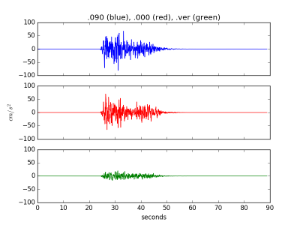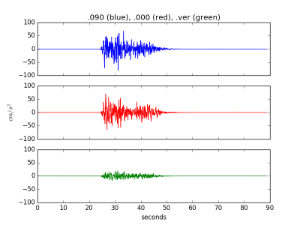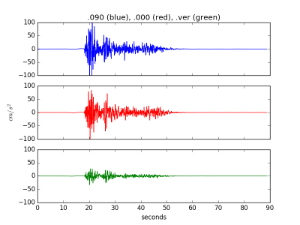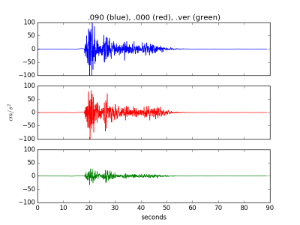In order to validate the binary workflow we have followed two steps:
- Verify that HF produced with the text workflow is exactly the same as the one produced by the binary workflow at the waveform level
- They use the same Fortran code so the waveforms should match
- BB verification also occurs on the waveforms. There are two stages, as some code has been ported to Python from C:
- Without site amplification ie. we use vs = 500 for everything.
- Include the site amplification and verify once again.
Results
HF
For random locations, the HF accelerations are visually close. Also, when computing the RMS (Root-Mean squared) error, we get very small discrepancy. For example:
Location WAI:
For this location we have the RMS per component of:
| Component | RMS |
|---|---|
| 000 | 0.0063 |
| 090 | 0.0108 |
| ver | 0.0016 |
BB
If we start with the same LF and same HF, we should arrive to exactly the same BB acceleration waveforms, this with and without site amplification. Once again, I have repeated the previous steps and found out that we have a perfect matching of waveforms:
Location CCH2:
And the values of the RMS for that location per component are:
| Component | RMS |
|---|---|
| 000 | 0.201 |
| 090 | 0.189 |
| ver | 0.065 |



